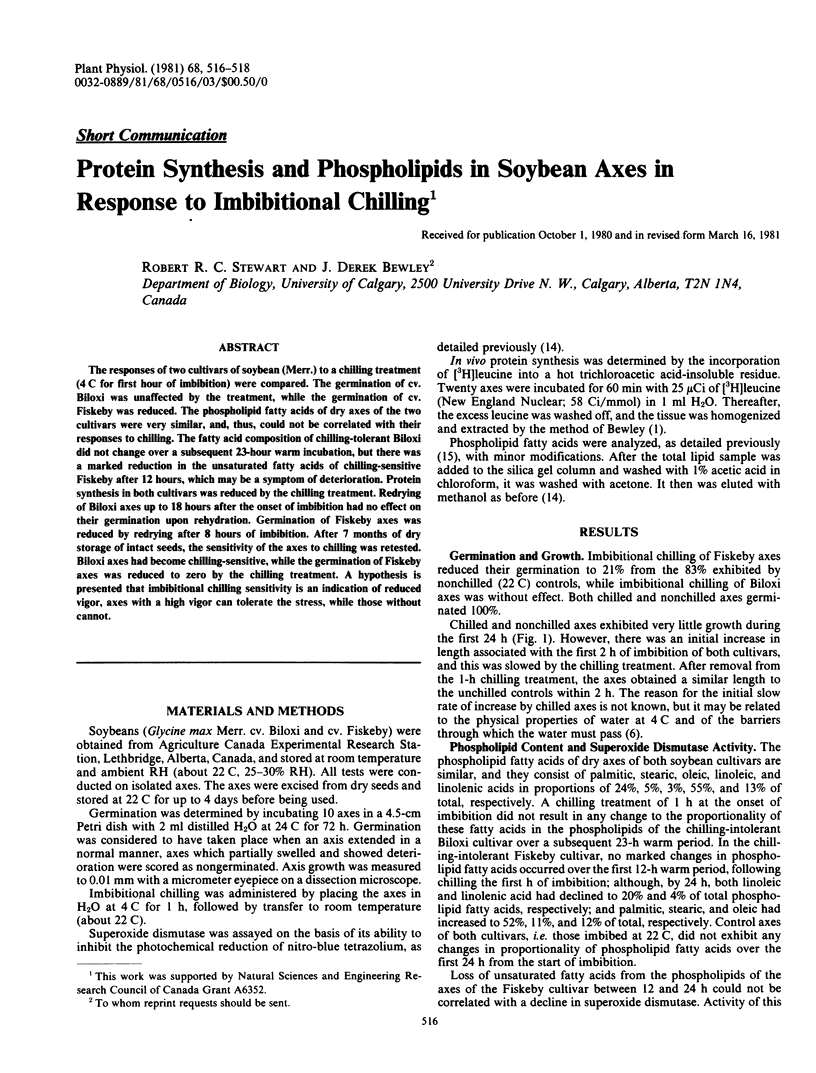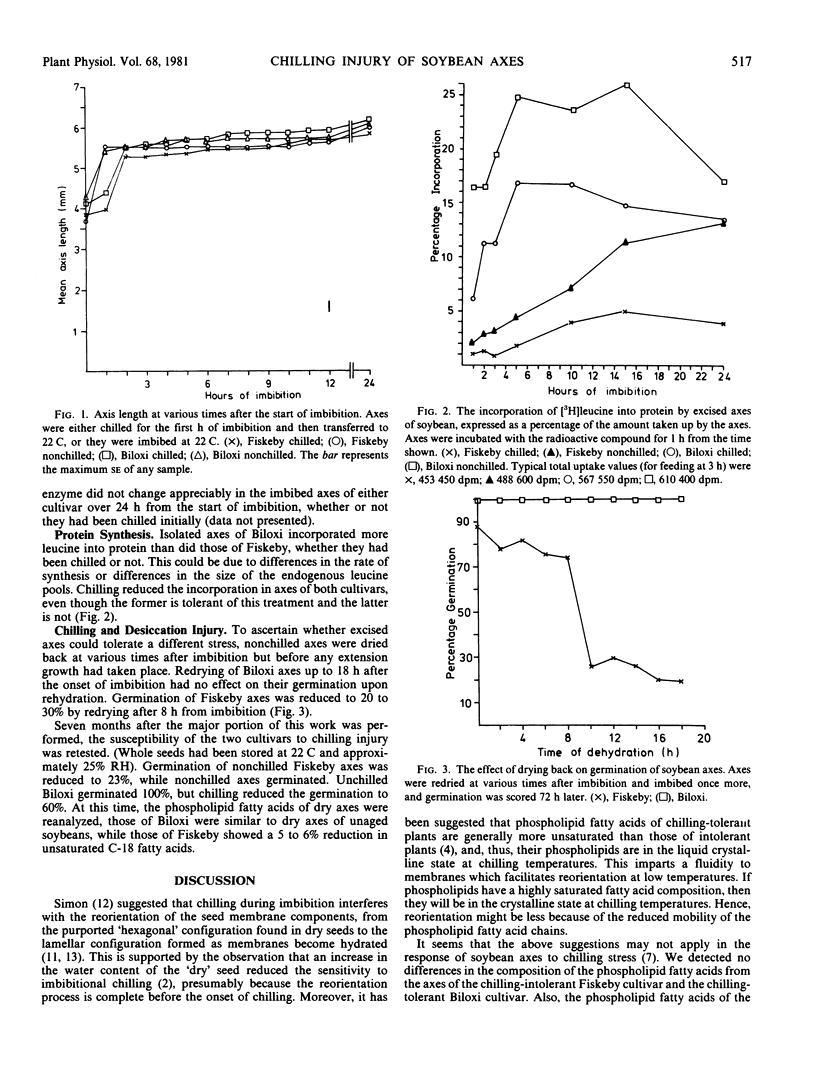Abstract
The responses of two cultivars of soybean (Merr.) to a chilling treatment (4 C for first hour of imbibition) were compared. The germination of cv. Biloxi was unaffected by the treatment, while the germination of cv. Fiskeby was reduced. The phospholipid fatty acids of dry axes of the two cultivars were very similar, and, thus, could not be correlated with their responses to chilling. The fatty acid composition of chilling-tolerant Biloxi did not change over a subsequent 23-hour warm incubation, but there was a marked reduction in the unsaturated fatty acids of chilling-sensitive Fiskeby after 12 hours, which may be a symptom of deterioration. Protein synthesis in both cultivars was reduced by the chilling treatment. Redrying of Biloxi axes up to 18 hours after the onset of imbibition had no effect on their germination upon rehydration. Germination of Fiskeby axes was reduced by redrying after 8 hours of imbibition. After 7 months of dry storage of intact seeds, the sensitivity of the axes to chilling was retested. Biloxi axes had become chilling-sensitive, while the germination of Fiskeby axes was reduced to zero by the chilling treatment. A hypothesis is presented that imbibitional chilling sensitivity is an indication of reduced vigor, axes with a high vigor can tolerate the stress, while those without cannot.
Full text
PDF


Selected References
These references are in PubMed. This may not be the complete list of references from this article.
- Bewley J. D. Polyribosomes Conserved during Desiccation of the Moss Tortula ruralis Are Active. Plant Physiol. 1973 Feb;51(2):285–288. doi: 10.1104/pp.51.2.285. [DOI] [PMC free article] [PubMed] [Google Scholar]
- Dogras C. C., Dilley D. R., Herner R. C. Phospholipid Biosynthesis and Fatty Acid Content in Relation to Chilling Injury during Germination of Seeds. Plant Physiol. 1977 Dec;60(6):897–902. doi: 10.1104/pp.60.6.897. [DOI] [PMC free article] [PubMed] [Google Scholar]
- Leopold A. C. Temperature effects on soybean imbibition and leakage. Plant Physiol. 1980 Jun;65(6):1096–1098. doi: 10.1104/pp.65.6.1096. [DOI] [PMC free article] [PubMed] [Google Scholar]
- McKersie B. D., Stinson R. H. Effect of Dehydration on Leakage and Membrane Structure in Lotus corniculatus L. Seeds. Plant Physiol. 1980 Aug;66(2):316–320. doi: 10.1104/pp.66.2.316. [DOI] [PMC free article] [PubMed] [Google Scholar]
- Mudd J. B., McManus T. T. Effect of steryl glycosides on the phase transition of dipalmitoyl lecithin. Plant Physiol. 1980 Jan;65(1):78–80. doi: 10.1104/pp.65.1.78. [DOI] [PMC free article] [PubMed] [Google Scholar]
- Priestley D. A., Leopold A. C. Absence of Lipid Oxidation during Accelerated Aging of Soybean Seeds. Plant Physiol. 1979 Apr;63(4):726–729. doi: 10.1104/pp.63.4.726. [DOI] [PMC free article] [PubMed] [Google Scholar]
- Stewart R. R., Bewley J. D. Lipid peroxidation associated with accelerated aging of soybean axes. Plant Physiol. 1980 Feb;65(2):245–248. doi: 10.1104/pp.65.2.245. [DOI] [PMC free article] [PubMed] [Google Scholar]


